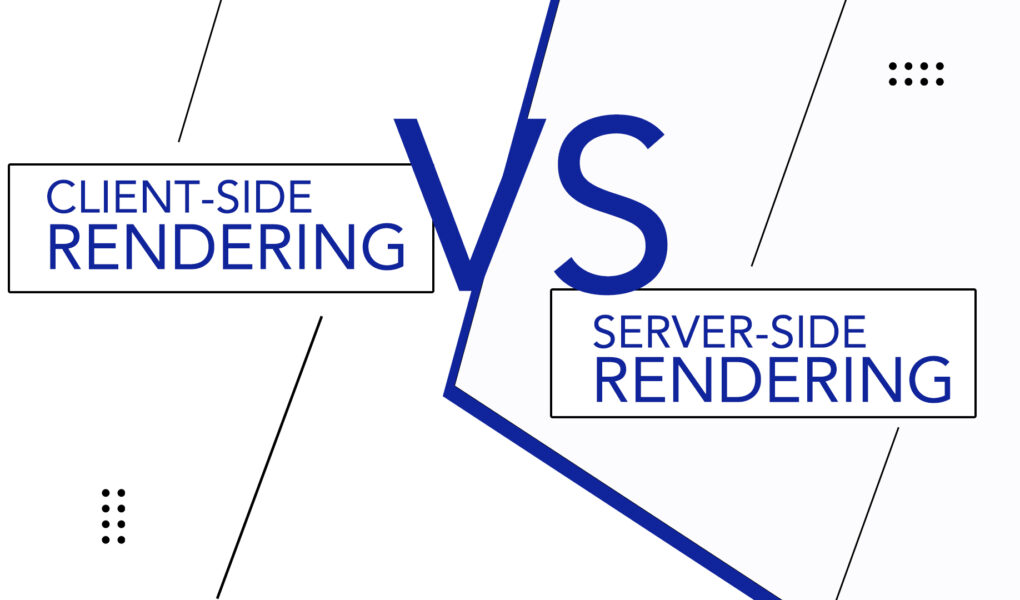In ancient times, web pages showed only static content. The only method available to upload your HTML onto a server was to transform it into useful documents using Server-side rendering. But in the modern era, websites are showing dynamic content. We can do shopping, send messages, etc. easily with the help of the fastest-growing rendering method known as Client-Side rendering.
The two most commonly used rendering methods are Client-Side Rendering(CSR) and Server-Side Rendering (SSR)
In this write-up, the detailed discussion of Server-Side Rendering and Client-Side Rendering is being discussed.
What is Client-Side Rendering?
Client-side rendering works by rendering the content in the browser with the help of a client-side JavaScript library. Instead of fetching all the content from the HTML document, the server provides a minimalistic HTML document that includes only the necessary JS files.
From handling logic to fetching data from an API, client-side server websites perform all tasks on their own. In Client-Side Rendering, Angular and React.js are some of the best examples.
The step-by-step procedure of how Client-Side Rendering works is as follows:
- The user types the desired website URL into the address bar.
- Next, a request is made to the server at the provided URL to retrieve the required data.
- When the client requests the website for the first time, the server sends the static files (HTML and CSS) to the client’s browser.
- The user’s content will initially download the HTML content and then proceed to download the Javascript. The HTML files are responsible for connecting the JavaScript, thereby initiating the loading process. During this process, loading symbols defined by the developer are displayed to the user.
- Once the Javascript is downloaded successfully, the client’s browser generates content dynamically. As the client explores and navigates with the website, the web content gradually becomes visible.
What is Server-Side Rendering?
When a web page is displayed on the server rather than in the browser, it is referred to as Server-side rendering. It is incredibly fast. As the data is retrieved from the database, an HTML page is created and it is sent to the client in milliseconds.
The step-by-step procedure of SSR is as follows:
- The user types the desired URL into the address bar.
- The server provides an HTML response that is ready to be displayed to the browser.
- The browser then displays the page, making it viewable, and downloads JavaScript.
- The browser utilizes React to enable user interaction with the webpage.
Differences Between Server-Side Rendering and Client-Side Rendering?
The key differences between SSR and CSR are listed below:
- The major difference between SSR and CSR is in their algorithmic operation. On the first load, SSR presents a fully rendered HTML page, whereas CSR presents an empty page.
- Client-side rendering is cheaper as compared to Server-side rendering.
- SSR is fast as the content is displayed in milliseconds as compared to CSR which is slow because of executing JavaScript in the browser. This can impact SEO as people may not wait for the website to load and exit the page.
- The number of HTTP requests decreases as a result of client-side rendering. Unlike Server-side rendering which renders each page from scratch, CSR allows for faster transitions between pages.
Usage of Client-Side Rendering VS. Server-Side Rendering?
Server-side rendering is your best choice if you want to increase your exposure on Google and rank better in the search engine result pages (SERPs). This rendering is commonly used by E-learning websites, online marketplaces, and few-page applications.
If you aim to enhance the user experience over SEO, choosing Client-side rendering is the best option. This type of rendering is commonly used by Dynamic web apps and online chatbots.
Conclusion
Client-side rendering is an advanced approach for rendering websites. It works by rendering the content in the browser with the help of a client-side JavaScript library. In Server-side rendering, the server retrieves generalized data and generates an HTML page, The browser interprets the information and shows the web page. Server-side Rendering enhances the visibility on Google whereas Client-Side Rendering enhances the user experience.



